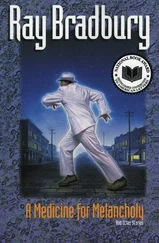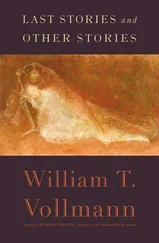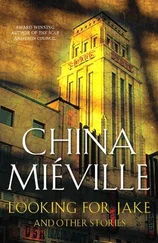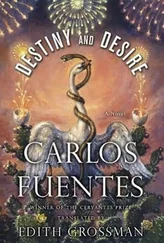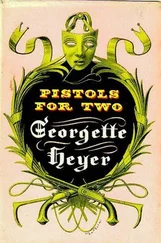11
Those first days, Doña Heredad Mateos sat at the door of the watchman’s hut in a severe black dress, with her shawl sometimes over her head, sometimes hiding her face, when a kind of willful mortification made her hide her features, which nonetheless appeared about to slide from her face like pebbles from the wall of a ruin. At times she would drape the shawl over her shoulders to emphasize various attitudes: majesty, resignation, hope, even a hint of seduction. For all this and more, since its invention, the Mexican shawl, the rebozo, had served, and the aged Doña Heredad employed it with a kind of atavistic wisdom, seated at the entrance of her temporary home, on a rude woven straw chair, with her feet planted in the dust, the points of her black, well-shined shoes peeking out of her dark skirts.
Her breast was covered with scapulars commending her to all the saints, male and female. And by her side, though she never touched it, a cup decorated with flowers, ducks, and frogs silently inviting everyone to leave the contribution that she neither solicited nor, seemingly, touched. The cup was always half full and each twosome entering the hut added a handful of pesos to the pot, but later they began to leave coins and Doña Heredad assessed them out of the corner of her eye, fearing and confirming that some were mere coppers dropped from poor fists, but others — she didn’t reveal her delight — were treasures taken from who knows what hiding places, flowerpots, mattresses, money boxes: testons, silver pesos, even the occasional gold piece.
So they came in pairs, a woman with a man, a woman with a child, a man with a child, two children, two women, almost never two men, and some left crying, others wearing beatific smiles, most in silence and with their heads bowed, some trying not to laugh, and they were the only ones Doña Heredad favored with a look of icy fury that was like a premonition of what hell reserved for the infidel, and the promise of paradise was reserved for those who left on their knees, repeating Miracle, miracle, miracle, and when the lines grew and began to snake through the construction site and down Calle José María Marroquí, a look of satisfaction appeared on her face, particularly when the aged mother of the watchman Jerónimo Mateos noticed scapulars like hers on the chests of the devout, and even cactus thorns piercing the breasts of the most faithful, and she tried not to feel too happy about the trail of blood left by the knees wounded on the painful climb from the excavations to the shack, since (as my brother Carlos María Vélez would say ironically), in addition to using the direct entrance to the shack from the street, where the engineers had put the much-discussed traffic light, those who felt they didn’t deserve the vision without some penance decided to crawl through the mud, the construction materials, the debris, the barbed wire, the iron rods, and the clutter of the project, to be rewarded with the divine vision inside the shack of Señora Heredad: miracle, miracle, miracle, Madonna and Child, revealed in the window of a humble shack, practically a manger, said a woman to her husband, Bethlehem, O little town of Bethlehem, how still … no, said another man to his wife, I happen to know that they just put the glass in that window; but that doesn’t make it less holy, you heretic, answered his wife icily …
— Mexico is instant Fellini, I said to a group of engineers (I am José María Vélez), not expecting them to understand me or to see the irony of having discussed to death whether to put in the famous traffic light in order to keep traffic from backing up, and now look, you can’t take a step into Calle José María Marroquí between Independencia and Artículo 123, first because of all the curious and the penitent, and now because of the increasing throng of ice-cream, popcorn, and hot-dog venders and carbonated-water hawkers, competing with the stands that sold tamarind, papaya, and pineapple drinks, and chunks of coconut, and raspberries, and the piles of tricolor banners that began to appear, the sweatshirts with stencils of the Child Jesus and the Holy Virgin in various poses: the Child on the knees of the Mother, the two embracing, he sucking the maternal breast; the steaming sizzling grills with fried tortillas and meat pies and pig cracklings, their spicy smells mixing with those of sputtering candles and heavy incense, which were the prologue to the upright boxes on wooden sawhorses offering holy pictures, Sacred Hearts of silver, novenaries, hymns, Magnificats and other prayers written in ancient, crude, almost archaic characters, on fragile paper, and boxes containing statues of the Good Shepherd, Our Lady of Sorrows, the Immaculate Conception, the Sacred Redeemer, the Wise Child, all of them reflected infinitely in the mirrors of the boxes in which they were set and in the metal of the carts, the windshields of the automobiles, the windows of the stores …
Then one morning a thousand colored balloons appeared bearing the image of the Virgin and Child and a phosphorescent advertisement for Oasis Condoms proclaiming: Men, Be Prepared — Only the Virgin Conceived without Sin; but even this excess could not divert my attention, which remained fixed on the entrance and exit of the shack. I looked over the heads of the faithful, grateful for the way the penitents bowed low, so I could guard, from a distance, the purity of the wedding dress that lay on the cot, the painstaking, prolonged work of restoring it having been abandoned by the woman of the hour, Doña Heredad, mother of the watchman Jerónimo Mateos, the humble mother and son singled out for the blessing of the Virgin Mary and the Child Jesus, who had visited them and so allowed the people to taste, to savor, to share in the sacred glory, and only then the police appeared to ensure that order was maintained, and later the truckloads of soldiers arrived to impose it once and for all, when the crowds bearing placards claiming violations of the Constitution and championing a progressive lay society, free of superstition, were on the point of confronting other, Catholic crowds, crying: Christ the King Lives! Christianity Yes, Communism No! and the dialectic discourses were drowned out by Hail Marys in which hope was tempered with the benediction and that with the anticipation of the eternal, the celestial tower, ivory tower, tower of David, full of grace, the Lord is with thee, blessed art thou amongst women and blessed is the fruit of thy womb, Jesus …
But what really caught my eye, in the line waiting to enter and witness the miracle, was that pair of unbelievers, the engineer Pérez and the foreman Rudecindo Alvarado. Of course, the engineer could be playing doubting Thomas: until I see, I refuse to believe; and Rudecindo’s agnosticism had already cost him an injured hand when he tried to capture the vision of the glowing child. Engineer Pérez and foreman Alvarado entered gravely, the engineer circumspect Rudecindo with his head bowed, into the shack of Doña Heredad Mateos.
— And the Day of the Holy Cross I did say a thousand times Jesus, Jesus, Jesus! Jerónimo Mateos struck his chest, kneeling beside his mother, who when she saw the television cameras coming told her son to guard her post and not let anyone by, she had to change fast so she’d look her best on television, and José María was afraid she would come back wearing the wedding dress, ruining it just so she’d be suitably decked out; but no Doña Heredad Mateos reappeared, not in her black clothes, but in a pink jacket and pink running pants, a big Adidas logo on her breast and new white tennis shoes bearing the same trademark, and I, taking advantage of the confusion and of the sudden shower that disrupted everything and confused the couple inside the shack and the other people who went in to take refuge, I slipped inside, feeling less than a man and more than a god — I, José María, your brother — no more, no less than a fleeting drop, mobile, unattainable, of mercury; a winged thief, I hurried into the shack while Doña Heredad was outside cursing the heavens that had betrayed her with rain just as the television cameras arrived, and I, your brother, touched the wedding dress with incredulous fingers, then I clasped it passionately, embracing it, closing my eyes, as Catarina closed them in her embrace, repeatedly kissing the hem, caressing the jewels sewn to the dress, giving thanks for the miracle of having rescued that lost object of my desire, of my erotic memory. Who would take it away from me? You? Don’t you have your own vision, brother, and your own object? And don’t Professor Ferguson and Catarina and even Doña Heredad, and the absent mother of our unattainable love? You have your own vision and your own desire, brother; never give them up. And don’t take mine away from me.
Читать дальше

